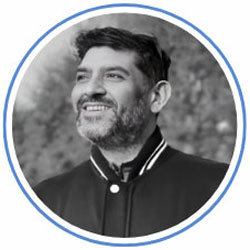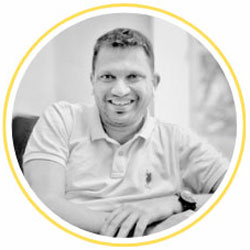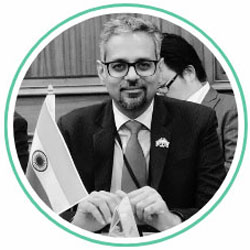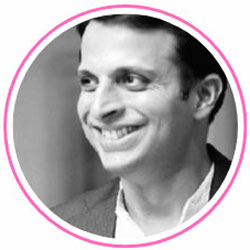 In today’s multicultural an dynamic environment which gives the “never before” opportunity to people to grow at an unfathomable pace, it is important to be leaders much before your designation says so. Leadership is the ability to lead successfully, a group or groups of people towards a common vision. While there are many schools of leadership which address leadership to enable smooth workings in a team, they all constitute the space of Inter Leadership.
In today’s multicultural an dynamic environment which gives the “never before” opportunity to people to grow at an unfathomable pace, it is important to be leaders much before your designation says so. Leadership is the ability to lead successfully, a group or groups of people towards a common vision. While there are many schools of leadership which address leadership to enable smooth workings in a team, they all constitute the space of Inter Leadership.
What is it?
Intra-leadership is about a journey of reintroductions. Intra-leadership is leadership of the inner self. In the fast-paced life that we lead, we tend to forget the very essence of what makes us uniquely “us”. Our minds are clouded by thoughts like “what to do”, “how do I earn more”, “why does he have more” etc. When the mind is clouded with this inner banter, the subconscious mind starts short-circuiting. The subconscious mind is not used to processing negative information. It functions best when there are positive affirmations and thinking.
Why is it important?
The human body is a very complex design of interconnected patterns, which may be physical or emotional. Both states are so intrinsically connected that a change in one will cause an effect on the other. For example, when you are feeling angry, bring your awareness to your thumbs. What is happening to them? They are tightening. When the thumbs tighten, so do your wrists, elbow, collar, scapula and the lower back. It’s like a domino effect. When you are experiencing the emotion of anger, your body automatically starts behaving in this way. If you do not change the physical state, the anger will not dissipate. As soon as you start relaxing the thumbs, the rest of the body will also start relaxing. By the time your lower back relaxes, the emotion, which was gripping you so hard, almost literally, also relaxes. This is the interconnectedness power of the human body.
Persian poet, mystic and theologian Jalaludin Rumi said, “If you want to change the way you think, change your posture”. He was right. As our bodies succumb to habitual patterns, the ability to think also starts aligning with them. Notice yourself when you are at home and work. Notice the way you walk, sit, stand, or lie down. Notice the way you hold the spoon and fork. It is usually never different from the previous time. All these are habits that a person forms over a period of time. If you start walking differently (at a different pace, for example), notice the shift in your thinking pattern. If you start walking faster, the brain activity increases, there is excitement; it is not your normal state of being. Notice yourself at that pace how and what you are thinking. If you slow down to half your natural pace and rhythm, notice how your body starts behaving. Notice how your mind starts playing games on you. Add to that the fact that because we live in a fast-paced world, our bodies and minds are not used to slowing down. We have moved away from stillness and silence. As you walk slower and slower, your mind will start sending SOS signals to the body asking it to get its act together and to increase the pace. If you give in to the struggle between the mind and the body, the mind wins. If you want to give the mind a taste of its own medicine, don’t increase your pace. After some emotive struggle, you will begin to realize how peaceful life can be at a slower pace and the clarity that this pace brings you.
Likewise change your posture while you are sitting and writing something or eating a meal and feel. Do not analyze. Just feel.
How?
One can work with the synchronicity of the mind and the body via body emotive sciences based on, among other things, the Alexander Technique and martial studies, music sciences, like guided imagery and music, and holistic studies. Alexander Technique is a theatrical concept created by a Tasmanian actor called F.M. Alexander, which realigns breathing with the muscles. Alexander studied the body in depth and realized that due to habits formed since childhood, the body tends to fall into patterns which restricts smooth flow of the breath leading to restricted and constricted muscle movement. Through one-on-one and slow interventions, the Alexander technique teacher will help you to become aware of these habitual patterns and create a learning space to correct them hence taking away unwanted physical stress.
Also the use of music helps a lot in finding the inner rhythm and also the rhythm within groups of people working together. Drum circles are a great way of understanding that discipline and creative freedom are both important to be able to create magic. When 20 or 200 people fall in sync with each other, playing one rhythm, it creates magic.
Conclusion
These activities are all a part of body emotive sciences that are entirely experiential in nature. The activity is processed in silence and inferences drawn out. They complete the whole process of learning. While techniques and skills can be learned through cognitive interventions, experiential techniques make the learning whole and complete. A full circle.






 MALATI VASUDEVA
MALATI VASUDEVA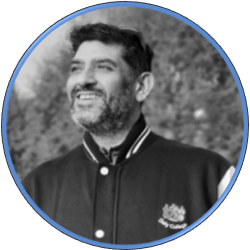 VIKRAM BADHWAR
VIKRAM BADHWAR PRIYANKA KUMAR
PRIYANKA KUMAR SUMAL VARGHESE
SUMAL VARGHESE

